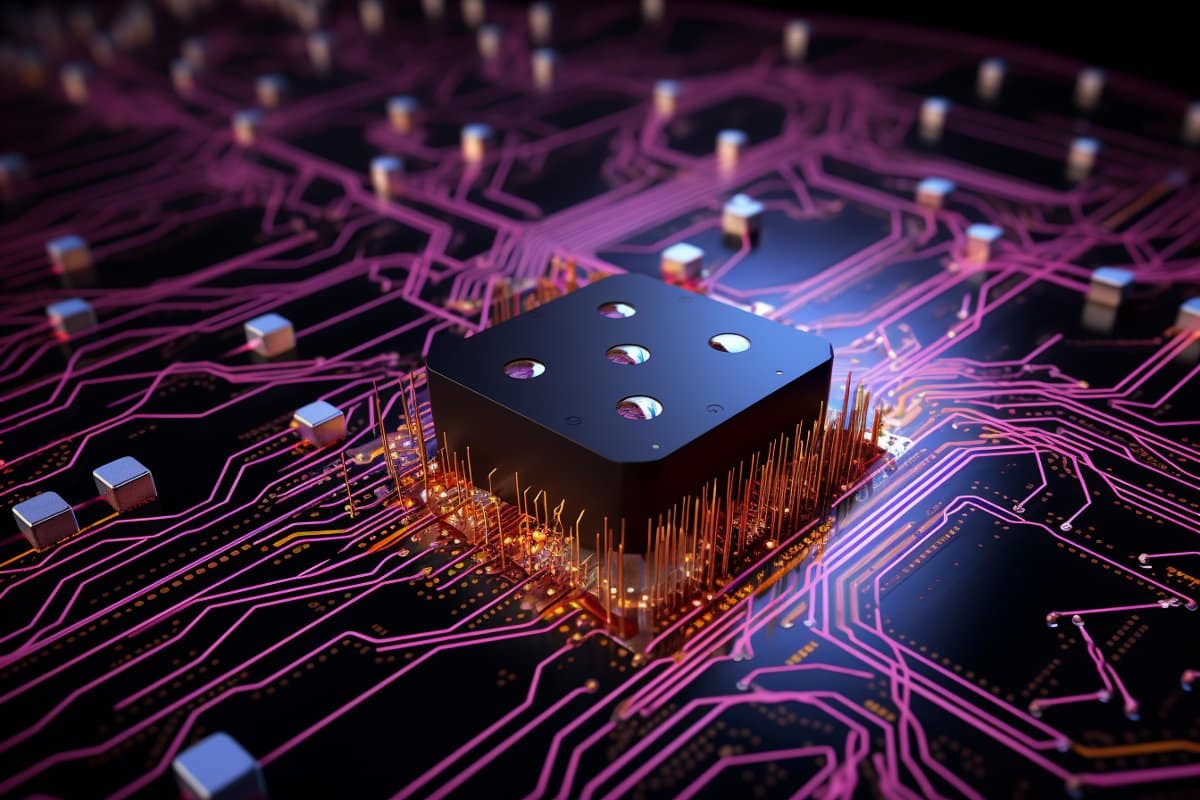Summary: In a revolutionary study, researchers created a hybrid system called Brainoware, which integrates human brain cell networks, or organoids, with a computer chip.
This innovative setup demonstrates capabilities in processing, learning, and memory, and has achieved basic speech recognition skills by decoding audio clips of Japanese vowels. The organoid-AI system, though less accurate than artificial neural networks, improved its speech recognition accuracy to about 78% with training.
This research opens new possibilities in biocomputing, showcasing the potential of brain organoids in complex computational tasks.
Key Facts:
- Brainoware is a pioneering hybrid system combining brain organoids with a computer chip, capable of processing information and learning.
- The system has shown potential in speech recognition, successfully decoding audio signals into electrical impulses interpreted by the brain cells.
- While initially less accurate, Brainoware’s speech recognition capabilities improved significantly with training, highlighting the adaptability of the brain cell networks.
Source: Neuroscience News
In a groundbreaking research initiative, neuroscientists have successfully integrated human brain cell networks, known as brain organoids, with electronic chips to perform elementary computational operations.
This landmark study, spearheaded by Feng Guo and his team at Indiana University Bloomington, marks a significant step in the realm of biocomputing.
The research group cultivated a brain organoid from stem cells and ingeniously connected it to a computer chip, forming a unique setup named “Brainoware.” This setup was further linked to an AI tool, leading to intriguing outcomes.

The brain-cell-and-chip hybrid demonstrated capabilities in processing, learning, and memory retention. Remarkably, it exhibited basic skills in speech recognition.
The findings, featured in today’s issue of Nature Electronics, hint at future bio-computer models that could surpass traditional computers in efficiency.
For many years, scientists have been exploring the possibility of building computers modeled on complex biological systems. Guo’s vision of these biological computers is to overcome certain limitations of traditional silicon-based computing, such as data processing bottlenecks.
Standard computers excel in numerical tasks, but the human brain outperforms them in handling intricate information with minimal energy consumption. Guo notes that this is the inaugural demonstration of employing brain organoids in computing. He expresses enthusiasm about the future prospects of organoids in the biocomputing sector.
The Brainoware project aimed to utilize real brain cells for sending and receiving data. Upon stimulating the brain-cell-chip hybrid electrically, Brainoware reacted, indicating neural network adaptations. This response implies that the system processed information and might potentially execute computing operations autonomously.
In testing Brainoware’s practical capabilities, Guo’s team engaged it in various tasks. They challenged it with mathematical problems and a speech recognition test involving 240 audio clips of Japanese vowels spoken by eight individuals.
The audio was transformed into electrical signals, which then interacted with the brain organoid’s neural networks. These interactions were decoded using an AI tool.
The team discovered that the organoid-AI combination could interpret these audio signal patterns, equating to a rudimentary form of speech recognition. Guo acknowledges the system’s initial low accuracy rate, which, however, improved with training to about 78% accuracy. Yet, it still trailed behind the efficiency of artificial neural networks.
Lena Smirnova, an assistant professor of public health at Johns Hopkins University, points out that while brain organoids cannot truly perceive speech, they respond to the electrical impulses from the audio clips.
She also notes the study didn’t confirm whether Brainoware could sustain information processing and learning over an extended period or handle multiple tasks simultaneously. Cultivating and maintaining brain cell cultures for computational purposes is a formidable challenge.
Despite these hurdles, Smirnova acknowledges the study as a compelling demonstration of brain organoids’ potential. This research not only opens new avenues in biocomputing but also underscores the intricate relationship between neuroscience and technology.
About this neurotech and AI research news
Author: Neuroscience News Communications
Source: Neuroscience News
Contact: Neuroscience News Communications – Neuroscience News
Image: The image is credited to Neuroscience News
Original Research: Closed access.
“Brain organoid reservoir computing for artificial intelligence” by Feng Guo et al. Nature Electronics
Abstract
Brain organoid reservoir computing for artificial intelligence
Brain-inspired computing hardware aims to emulate the structure and working principles of the brain and could be used to address current limitations in artificial intelligence technologies. However, brain-inspired silicon chips are still limited in their ability to fully mimic brain function as most examples are built on digital electronic principles.
Here we report an artificial intelligence hardware approach that uses adaptive reservoir computation of biological neural networks in a brain organoid. In this approach—which is termed Brainoware—computation is performed by sending and receiving information from the brain organoid using a high-density multielectrode array.
By applying spatiotemporal electrical stimulation, nonlinear dynamics and fading memory properties are achieved, as well as unsupervised learning from training data by reshaping the organoid functional connectivity.
We illustrate the practical potential of this technique by using it for speech recognition and nonlinear equation prediction in a reservoir computing framework.






